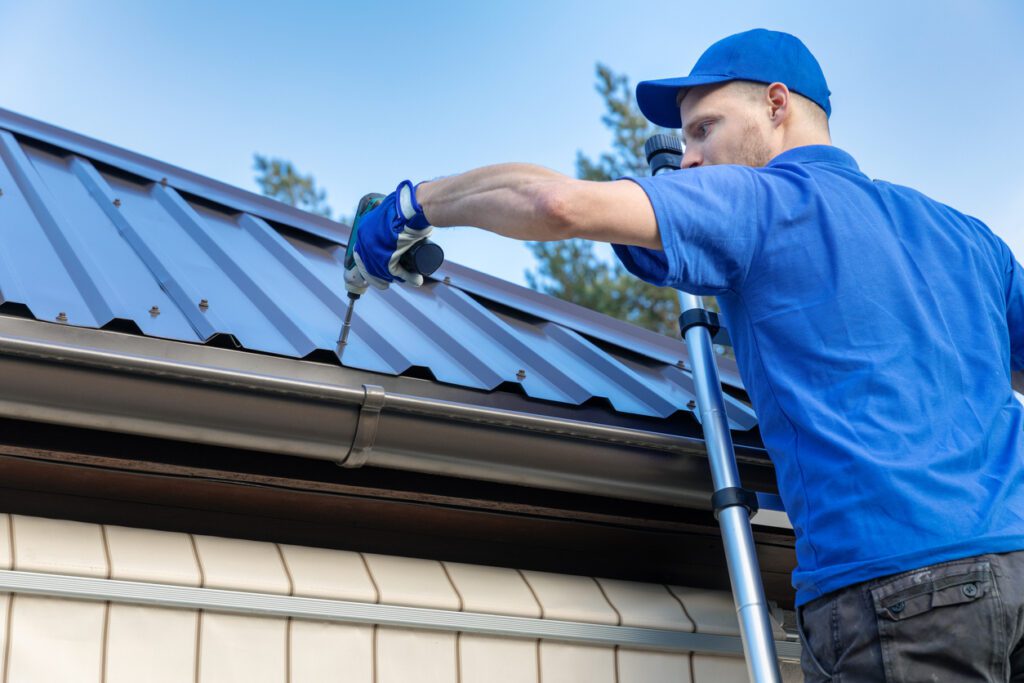Imagine you’re in the process of replacing your roof, and you’re faced with a common dilemma: should you remove the existing shingles or leave them underneath the new metal roof? This seemingly simple decision can have a significant impact on the quality and longevity of your new roof. In this article, we will explore the pros and cons of leaving shingles under a metal roof and provide you with the necessary information to make an informed choice for your roofing project.
Reasons to Leave Shingles Under Metal Roof
1. Cost Savings
Leaving shingles under a metal roof can result in significant cost savings. Instead of paying for the time and labor required to remove the shingles, you can simply install the metal roof directly on top of the existing shingles. This eliminates the need for expensive disposal fees and reduces the overall cost of the roofing project.
2. Energy Efficiency
Another benefit of leaving shingles under a metal roof is improved energy efficiency. The layer of shingles acts as an additional insulating barrier, helping to reduce heat transfer and keeping your home cooler in the summer and warmer in the winter. This can result in lower energy bills and increased comfort throughout the year.
3. Noise Reduction
Metal roofs can be noisy during rainstorms, causing discomfort for some homeowners. However, leaving shingles under the metal roof can help reduce this noise. The layer of shingles acts as a sound dampening layer, minimizing the sound of raindrops hitting the metal surface. This can create a quieter and more peaceful indoor environment.
4. Improved Insulation
By leaving shingles under the metal roof, you can also benefit from improved insulation. The layer of shingles adds an extra barrier between your home and the outside elements, helping to prevent heat loss in the winter and heat gain in the summer. This can result in a more consistent and comfortable indoor temperature, reducing the strain on your heating and cooling systems.
Considerations Before Leaving Shingles Under Metal Roof
1. Roof Structure
Before deciding to leave shingles under a metal roof, it is important to consider the condition of your roof structure. The existing roof must be strong and stable enough to support the additional weight of the metal roof and the shingles underneath. If there are any structural issues or signs of damage, it may be necessary to remove the shingles to address these concerns before installing the metal roof.
2. Moisture and Ventilation
Proper moisture management and ventilation are crucial for the health and longevity of your roof. Leaving shingles under a metal roof can potentially trap moisture between the layers, leading to rot, mold, and other issues. It is essential to ensure that your roof has proper ventilation systems in place to allow for the efficient flow of air and prevent moisture buildup.
3. Roof Load Capacity
Every roof has a maximum load capacity, which includes the weight of both the metal roof and the shingles. Leaving shingles under a metal roof increases the overall weight on your roof structure, and it is important to determine whether your roof can safely support this additional load. Consulting with a structural engineer or a roofing professional can help you assess the load capacity of your roof accurately.
4. Compatibility with Metal Roofing
Not all types of shingles are compatible with metal roofing systems. It is essential to ensure that the shingles you have on your roof are compatible with the metal roof you plan to install. Some types of asphalt shingles, for example, may not adhere well to the metal surface, potentially causing issues with the installation and compromising the performance of the metal roof.
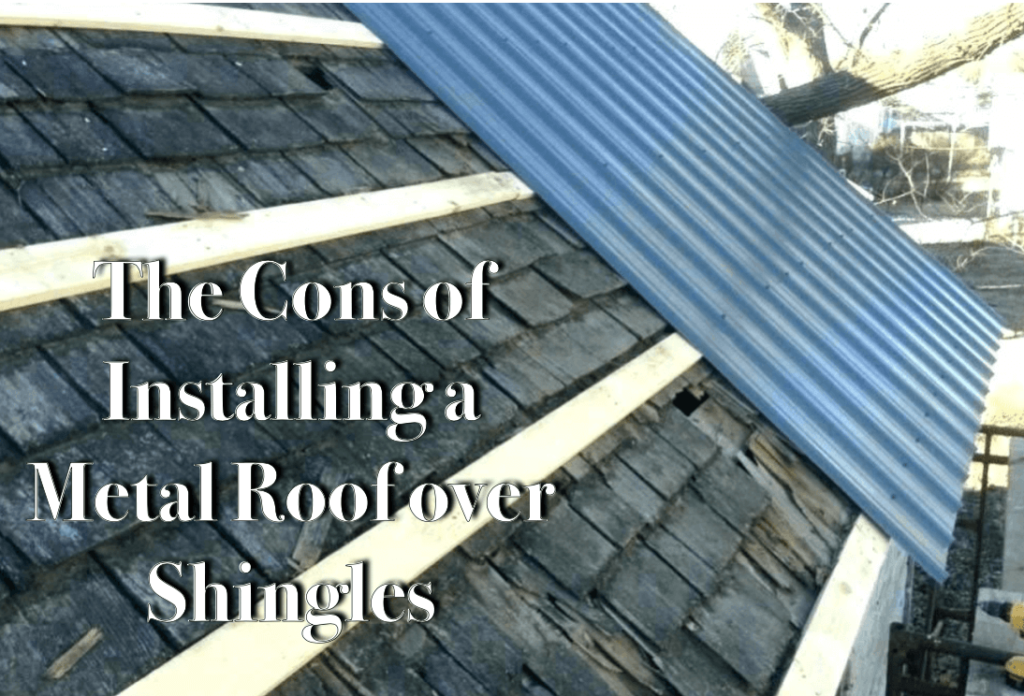
Potential Problems of Leaving Shingles Under Metal Roof
1. Trapped Moisture
One of the potential problems of leaving shingles under a metal roof is the trapping of moisture. If the layers of shingles and metal roofing are not adequately sealed or ventilated, moisture can become trapped between them. This trapped moisture can lead to mold growth, rot, and overall deterioration of the roof structure. Proper ventilation and moisture management measures should be taken to mitigate this risk.
2. Increased Weight
Leaving shingles under a metal roof adds additional weight to the roof structure. While metal roofs are generally lightweight, the cumulative weight of the shingles and the metal roof can put stress on the roof structure. If your roof is not designed to handle this extra weight, it can lead to structural damage, sagging, and potential collapse. It is crucial to assess the load capacity of your roof and consult with professionals to ensure the safety and integrity of your roof structure.
3. Reduced Lifespan
When shingles are left underneath a metal roof, their lifespan can be significantly reduced. Shingles are not designed to be a long-term roofing solution, and their exposure to the elements, moisture, and higher temperatures under the metal roof can accelerate their deterioration. This can lead to premature failure of the shingles, compromising the integrity of the entire roof system.
4. Limited Roofing Options
Another potential problem of leaving shingles under a metal roof is the limited options for future roofing projects. If you decide to replace the metal roof in the future, the presence of shingles underneath can complicate the installation process and limit your options for roofing materials. Removing the shingles before installing the metal roof allows for greater flexibility and a wider range of future roofing choices.
5. Future Repair Complications
Leaving shingles under a metal roof can also complicate future repair or maintenance work. If a section of the metal roof needs repair or replacement, accessing the area beneath the metal panels can be difficult with the shingles in place. Removing the shingles beforehand makes it easier to address any potential issues or perform necessary repairs without disrupting the entire roofing system.
Benefits of Removing Shingles before Installing Metal Roof
1. Reduced Weight
Removing shingles before installing a metal roof significantly reduces the weight on your roof structure. This can alleviate stress and potential damage caused by excess weight, improving the overall longevity and performance of your roof.
2. Enhanced Durability
By removing the shingles, you can inspect the underlying roof structure for any damage or issues that need to be addressed. This allows for proper repairs and ensures a solid foundation for the metal roof, enhancing its durability and lifespan.
3. Seamless Appearance
Removing the shingles before installing a metal roof results in a seamless appearance. Without the added thickness of the shingles, the metal roof sits flush against the roof structure, creating a clean and visually appealing finish.
4. Better Long-Term Performance
Removing the shingles provides an opportunity to install additional insulation and ventilation systems, further improving the energy efficiency and overall performance of your roof. This can result in long-term energy savings and a more comfortable indoor environment.
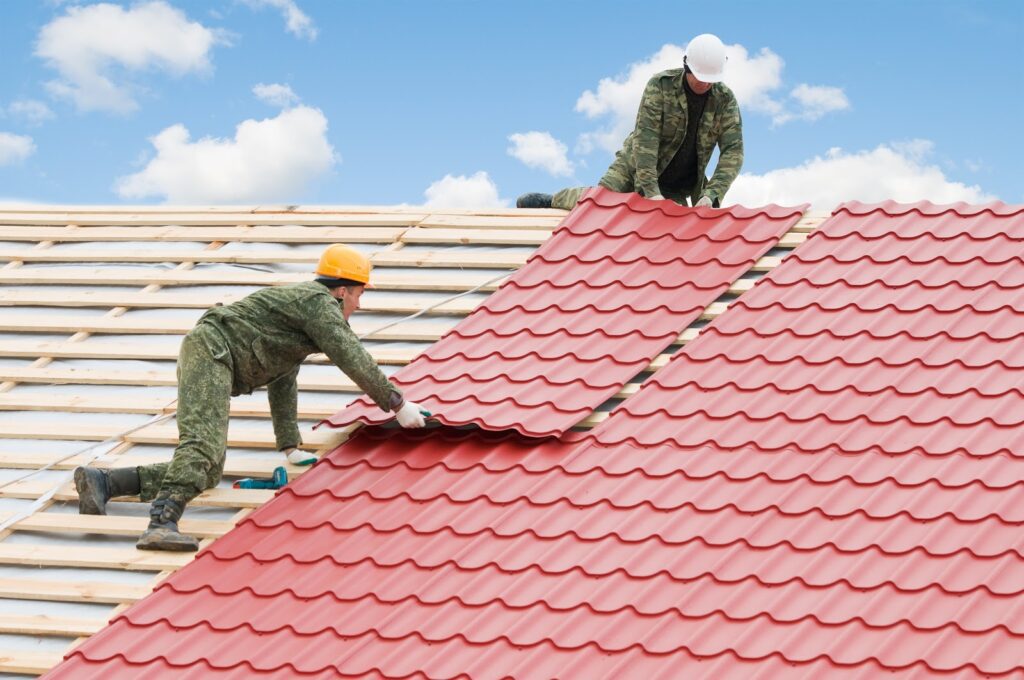
Factors Influencing the Decision
1. Cost-Benefit Analysis
Before deciding whether to leave shingles under a metal roof, it is important to conduct a thorough cost-benefit analysis. Consider factors such as the cost of shingle removal, disposal fees, potential repairs, and the long-term benefits of either option. By evaluating the costs and benefits, you can make an informed decision that aligns with your budget and priorities.
2. Environmental Impact
Consider the environmental impact of your roofing decision. Leaving shingles under a metal roof may result in additional waste being sent to landfills. On the other hand, removing the shingles requires energy and resources. Assess the environmental consequences of each option and prioritize sustainability when making your decision.
3. Roofing Regulations and Codes
Ensure that your chosen roofing method complies with local regulations and building codes. Some areas may have specific requirements regarding shingle removal or the installation of metal roofing. Consult with local authorities or a qualified roofing professional to ensure you are following the proper guidelines for your region.
4. Timing and Resources
Consider your timeline and available resources when deciding whether to remove shingles before installing a metal roof. Shingle removal can be a labor-intensive process, and it may require specialized equipment or expertise. Assess your schedule, budget, and access to professional assistance to determine the most feasible and efficient option for your roofing project.
Signs Indicating Shingles Removal is Necessary
1. Damaged or Decaying Shingles
If your existing shingles are damaged, decaying, or showing signs of significant wear and tear, it is advisable to remove them before installing a metal roof. Failing to address deteriorating shingles can lead to further problems and compromise the performance and longevity of your new roofing system.
2. Inadequate Roof Structure
If your roof structure is already weakened or compromised, it is essential to remove the shingles before installing a metal roof. This allows for proper repairs and reinforcement of the underlying structure to support the additional weight of the metal roof.
3. Moisture or Mold Issues
If you have experienced ongoing moisture problems or mold growth in your attic or ceiling, it may be necessary to remove the shingles to address these issues. Leaving the shingles in place can trap moisture and exacerbate mold growth, leading to potential health hazards and further damage to your home.
4. Current Roof Load Capacity
Evaluate the load capacity of your current roof to determine whether it can safely support the weight of both the metal roof and the shingles underneath. If your roof is already nearing its load limit or has shown signs of structural stress, it is advisable to remove the shingles to reduce the overall load on the roof structure.
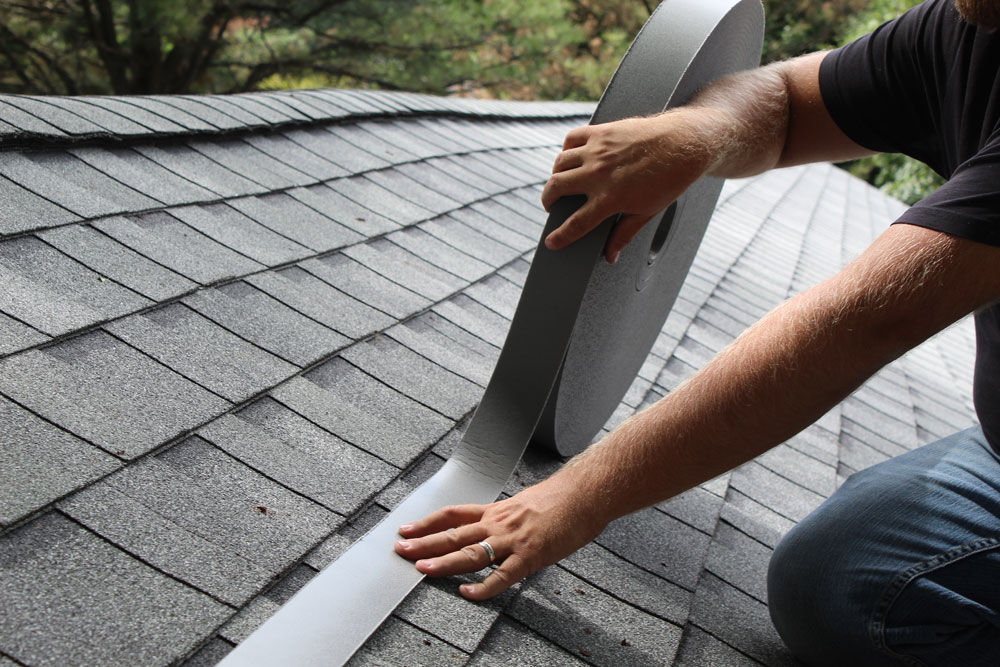
Factors Supporting Shingles Retention
1. Minimal Shingle Damage
If your shingles are in good condition with minimal damage or wear, leaving them under the metal roof may be a viable option. Assess the overall condition of the shingles and consult with a roofing professional to determine if they can remain in place without compromising the performance of the metal roof.
2. Structurally Sound Roof
If your roof structure is strong and stable, leaving the shingles under a metal roof may be an option. However, it is important to ensure that the roof has the load capacity to accommodate the additional weight and that any underlying structural issues are addressed before installation.
3. Proper Ventilation and Insulation
If your roof already has adequate ventilation and insulation systems in place, leaving the shingles under a metal roof can help enhance energy efficiency and provide additional insulation. Proper ventilation and insulation are crucial for maintaining a healthy and efficient roof system.
4. Budget Constraints
If budget constraints are a major consideration, leaving shingles under a metal roof can help reduce the overall cost of the project. However, it is important to weigh the potential long-term savings against the risks and limitations associated with leaving the shingles in place.
Professional vs. DIY Shingle Removal
1. Complexity of the Task
Shingle removal can be a complex and labor-intensive task. It involves stripping away layers of shingles, disposing of the waste properly, and preparing the roof surface for the new metal roof. If you are not experienced in roofing projects and lack the necessary tools, it is advisable to hire a professional to ensure the task is completed correctly and efficiently.
2. Safety Considerations
Removing shingles can be hazardous, especially if you are not equipped with the proper safety gear and training. Climbing ladders, working on steep slopes, and handling sharp tools pose potential risks. Professional roofers are trained in safety protocols and have the necessary equipment to perform the job safely.
3. Expertise and Equipment
Professional roofers have the expertise and specialized equipment to remove shingles efficiently and without causing damage to the underlying roof structure. They understand the intricacies of the task and can identify any underlying issues that may need to be addressed before installing the metal roof.
4. Warranty and Insurance
By hiring a professional roofing contractor to remove the shingles, you can benefit from warranties and insurance coverage. Reputable roofing companies often provide warranties that guarantee the quality of their workmanship. Additionally, they carry liability insurance, protecting you from any potential accidents or damages that may occur during the shingle removal process.
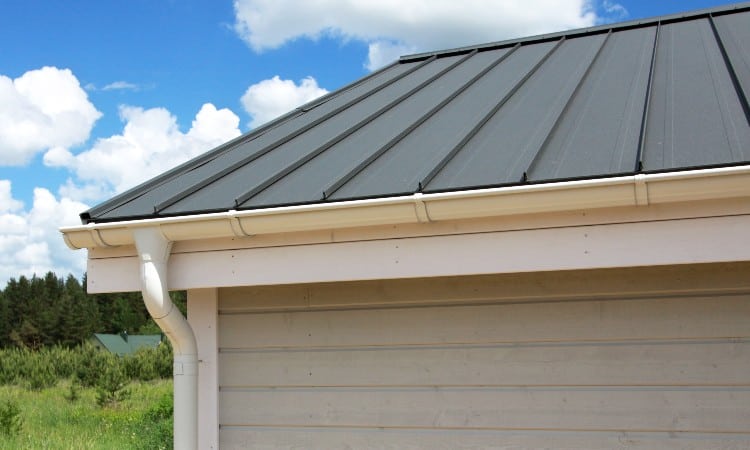
Steps for Proper Shingle Removal
1. Inspecting the Existing Shingles
Before removing the shingles, thoroughly inspect the existing roof to identify any areas of damage, mold, or deterioration. Look for loose or missing shingles, signs of leakage, and any potential structural issues. This inspection will help determine the extent of repairs needed and ensure the roof is in good condition before proceeding.
2. Preparing the Work Area
Prepare the work area by removing any debris, loose shingles, or other obstacles that may impede the shingle removal process. Install temporary protection, such as tarps or plywood, to shield the surrounding areas from potential damage during the removal process.
3. Removing Shingles Carefully
Starting from the top of the roof, use a roofing shovel or a pitchfork to carefully pry up and remove the shingles. Work systematically across the roof, ensuring that all nails and attachments are properly detached. Dispose of the shingles in accordance with local regulations and environmental guidelines.
4. Addressing Repairs and Restoration
Once the shingles have been removed, assess the underlying roof structure for any damage or issues that need to be addressed. Make necessary repairs, reinforce the structure if needed, and ensure that the roof surface is clean and ready for the installation of the metal roof. Consult with a roofing professional to ensure all repairs are done correctly.
Conclusion
In conclusion, the decision to leave shingles under a metal roof should be carefully considered, taking into account various factors and individual circumstances. There are significant benefits to leaving shingles under a metal roof, including cost savings, energy efficiency, noise reduction, and improved insulation. However, potential problems, such as trapped moisture, increased weight, reduced lifespan, limited roofing options, and future repair complications, must also be taken into consideration.
Factors such as roof structure, moisture management, roof load capacity, and compatibility with metal roofing play a crucial role in determining whether shingle removal is necessary. Signs indicating shingle removal is necessary include damaged or decaying shingles, inadequate roof structure, moisture or mold issues, and current roof load capacity.
Removing shingles before installing a metal roof offers benefits such as reduced weight, enhanced durability, seamless appearance, and better long-term performance. Factors influencing the decision include cost-benefit analysis, environmental impact, roofing regulations and codes, and timing and resources.
Professional shingle removal is recommended due to the complexity of the task, safety considerations, expertise, and equipment. Hiring professionals also provides warranty and insurance coverage. Proper shingle removal involves inspecting the existing shingles, preparing the work area, removing shingles carefully, and addressing repairs and restoration.
Ultimately, the decision to leave shingles under a metal roof or remove them depends on individual circumstances and priorities. Consulting with professionals and considering all available information will help ensure the best outcome for your roofing project.
